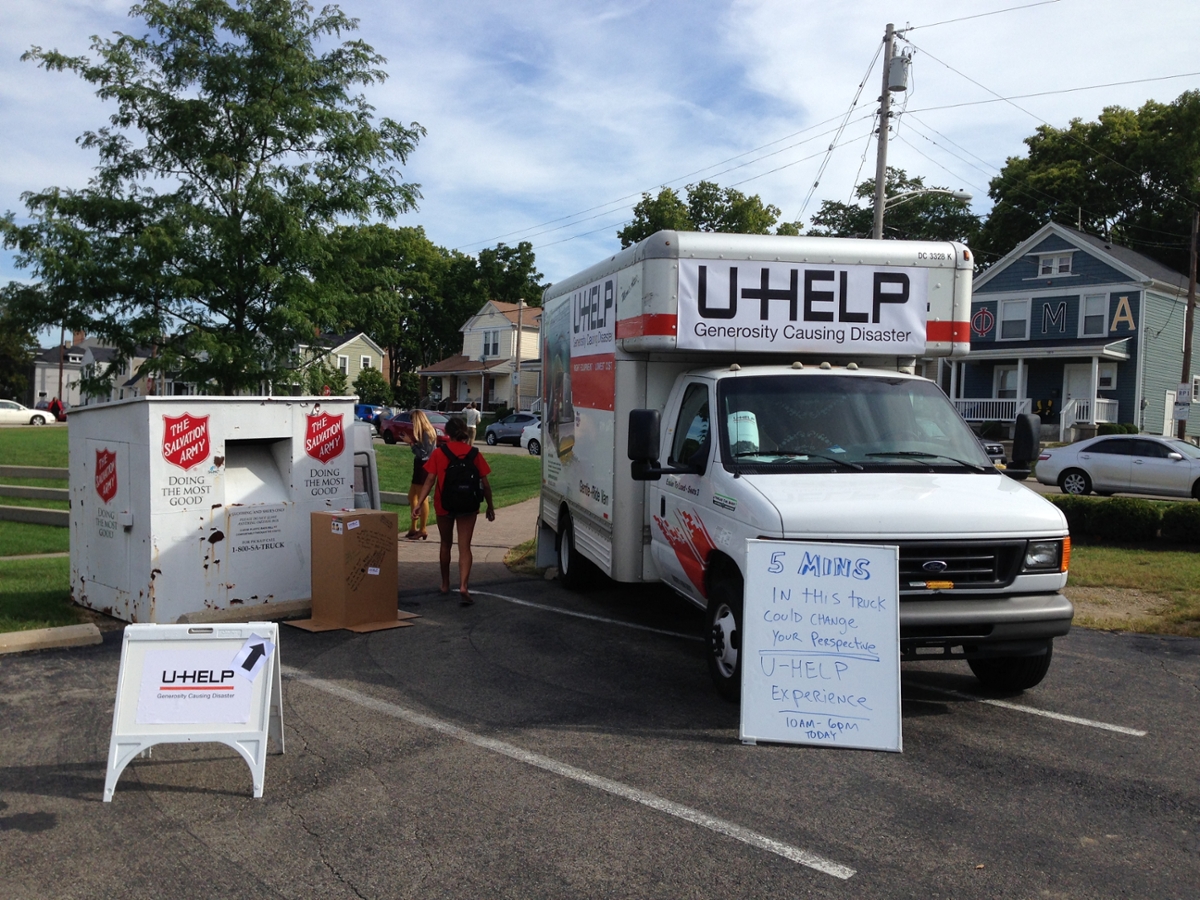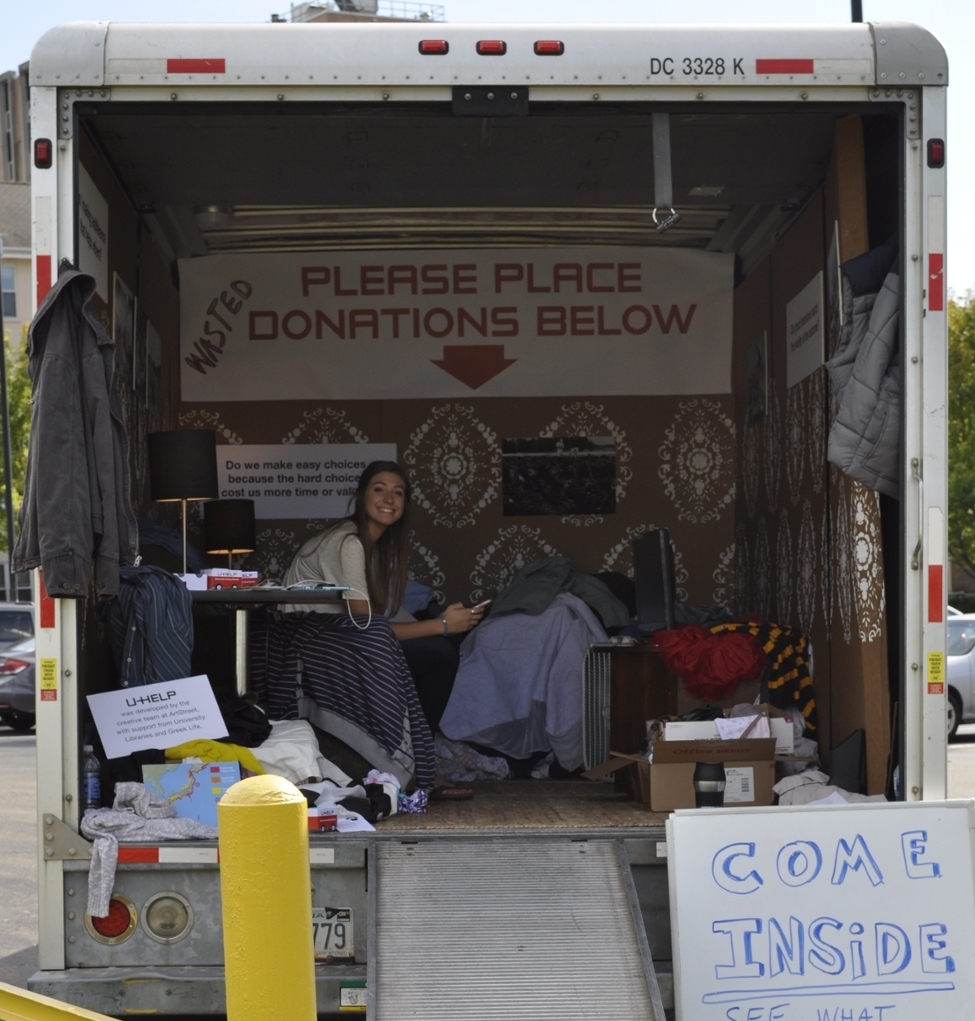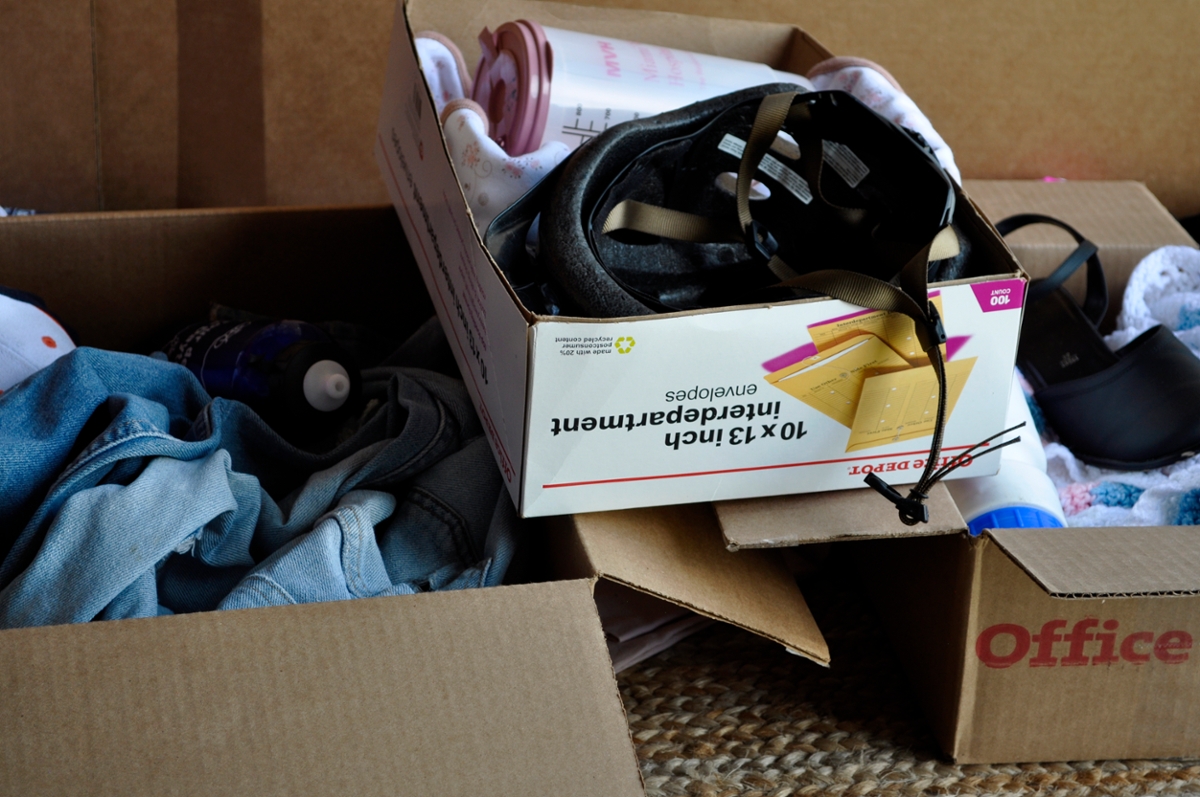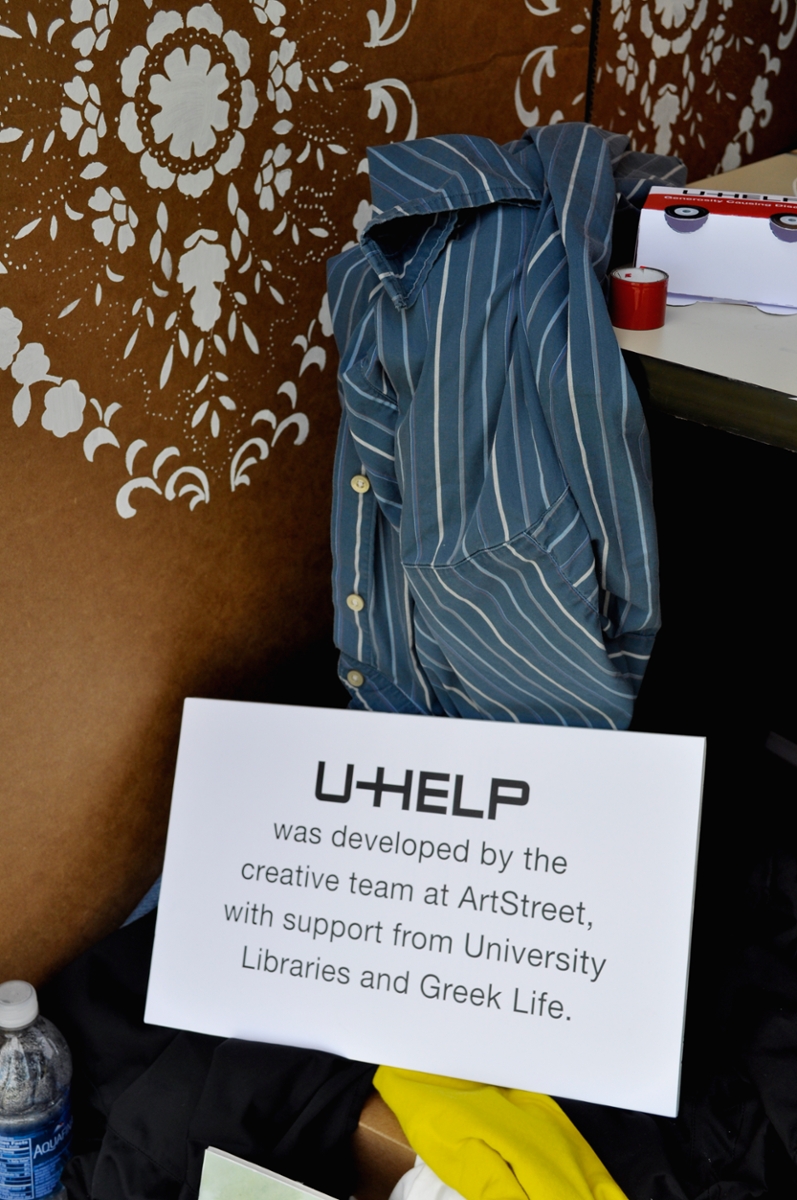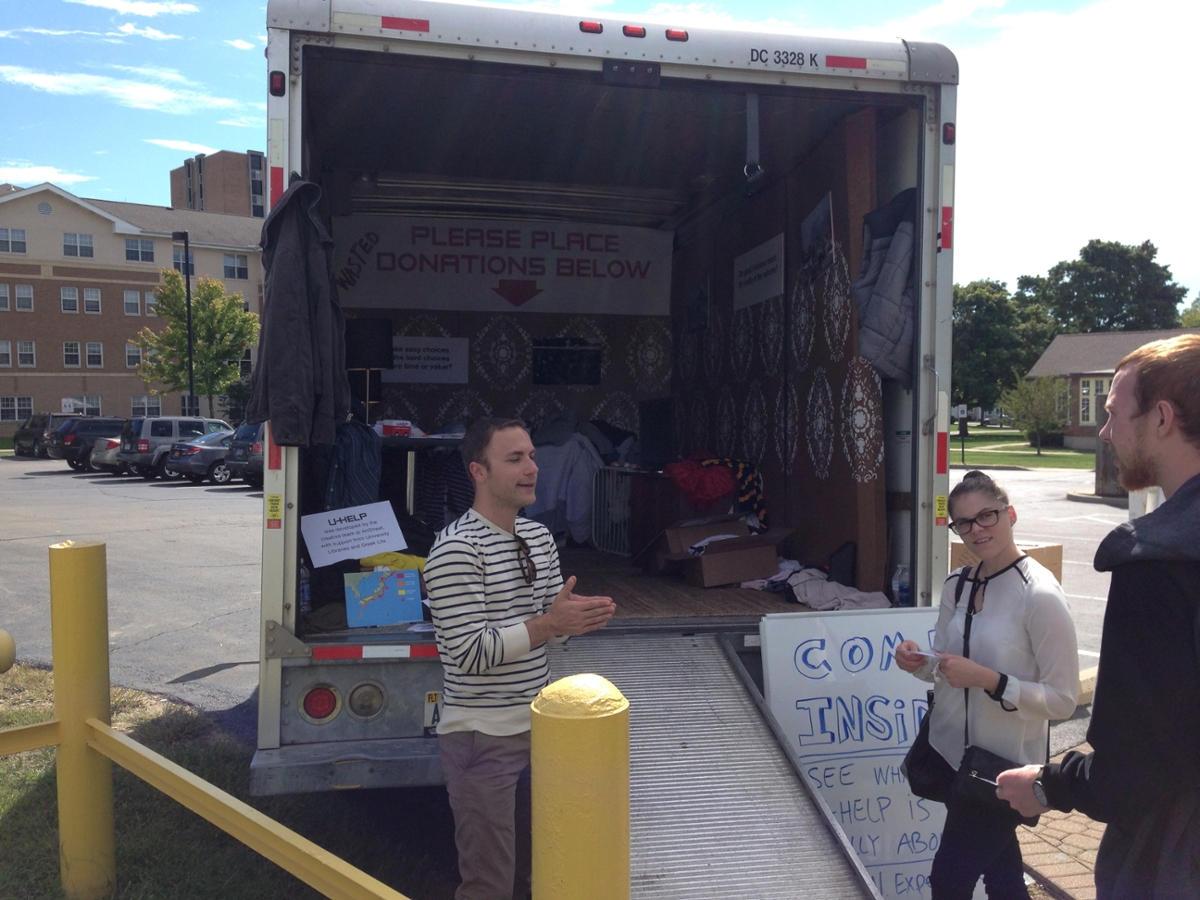IACT: Creativity for Tomorrow
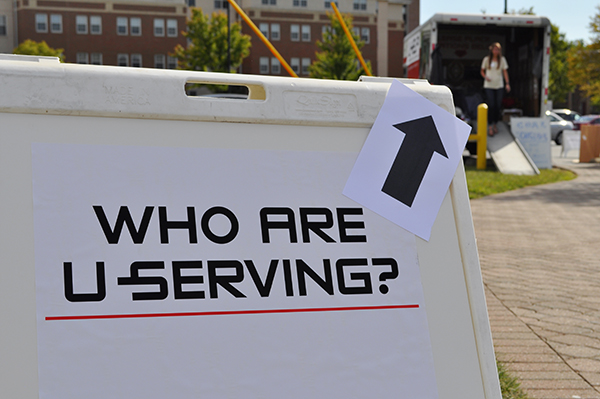
U-HELP: Generosity Causing Disaster
As a Marianist university instilled with communal values, our campus thrives on students with generous hearts and philanthropy-driven mindsets. While we tend to not question the goodness of our intentions when we give aid to others, the U-HELP experience shed light on the reality behind donating to places in need of disaster relief.
U-HELP, an interactive visual experience around the topic of disaster relief through the lens of sensationalized American giving, opened to the University of Dayton campus community over a two day period on September 14th and 15th. The experience, which took place inside of a U-Haul truck, appeared to be a common American living room with a couch, television and pictures on the wall. Juxtaposed to this familiar scene were masses of piled clothes, unwanted water bottles, and high-heeled shoes.
These piles signified the “relief” that Americans donate when disasters occur both domestically and internationally. Donating old items that seemingly had been lying around the house, people send their donations to areas affected by disaster, but these donors do not realize the second wave of a disaster they in fact are creating.
The hundreds of thousands of water bottles that are donated to areas that have experienced natural disasters end up becoming litter and eventually obstructing waterways as the plastic builds up in debris. Following the shooting at Sandy Hook Elementary School, 68,000 teddy bears were sent to the school as personal donations to the children. While these items came as a means of good intention, the sheer quantity produced a second disaster of where to store such a mass of material objects. As the Center for International Disaster Information suggests, donations of clothing or toys may feel more personal than a monetary donation. However, small financial donations provide other life-saving services now, and help rebuild infrastructure later.
The U-HELP experience prompted visitors with a hypothetical tsunami in Japan, displacing thousands of people. The visitors were then given a box of common donations that contributed to the larger perspective of reality behind donating personal items to disasters. Ranging from bike helmets to parkas, the message was clear to participants that these objects would not provide help or relief to the victims of this circumstance. The experience for participants was to realize that their donations appeared to be going to waste.
The creative team at ArtStreet designed the experience in collaboration with Katy Kelly (University Libraries) and Kevin Cane (Director of Greek Life). “This was a well received event that impacted the perspective of the campus community about disaster relief,” said Mike Puckett, Program Coordinator of the Institute for Arts Nexus at ArtStreet and U-HELP organizer.
The U-HELP experience was created to parallel the concept of binary choices in ArtStreet’s White Box Gallery SENSATIONALIZE installation. To learn more about how to responsibly donate to disaster relief, please refer to the Center for International Disaster Information at www.cidi.org.
Written by Kiersten Remster ‘17. Photos by Maddy McCabe and Mike Puckett.

